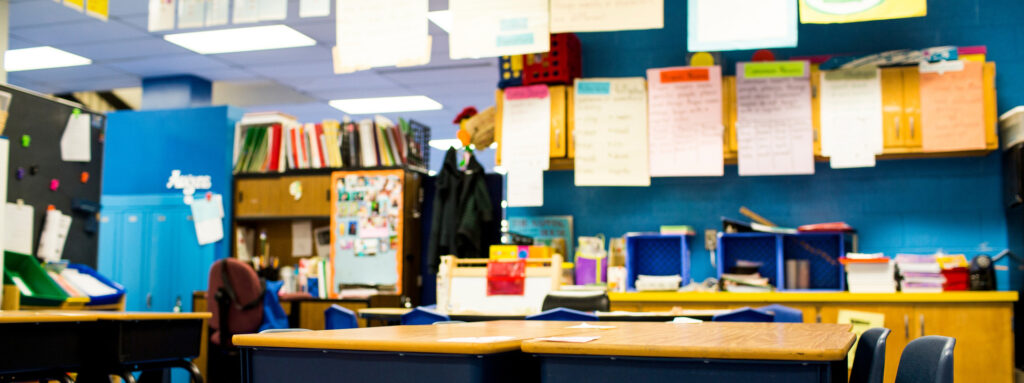Stop me if you’ve heard this one. A big new idea hits in education (teacher evaluation! Merit pay! iPads for everyone!). It attracts vocal and enthusiastic cheerleaders who talk up its game-changing potential. This triggers blowback from critics who point out all the reasons why the concept can’t or won’t work. Then the proponents typically backtrack. Any value in the original idea, even if it wasn’t perfectly formed, gets thrown out with the rest. And so it goes: A system that fails most kids continues to avoid fundamental change.
A live example of this dynamic is around personalized learning. This is an approach to schooling in which the student’s daily experiences of school—from materials to instructional strategies to emotional development—are designed around his or her individual strengths, interests, and goals. Proponents make an impassioned case for it, noting research that shows the promising impact of one-on-one support, and arguing that 21st century technology can make such individualized programs economically viable. In response, skeptics call the research claims overblown, point to the poor track record of some technology-heavy school models, and show general skepticism.
[subscribe]
Will personalized learning go the way of so many other big ideas in our field, out the window because we didn’t get it all right, right away? It must not. Because personalized learning has the potential to become the most powerful equity tool our field has seen.
Today, as it has been for years, school is organized around the goal of helping the highest percentage of students master skills and content. Even our most sophisticated accountability systems measure the performance of sub-groups of kids in the aggregate. Engagement with parents typically consists of form letters and e-mails designed for all parents; curricula provide optimal learning sequences for the theoretical “average” student. In such a system, students who have been historically underserved by our schools continue to get less than their fair share of precious resources. If the focus of adults in the system shifts from average student performance to the aspirations and experiences of individual students, the success of traditionally underserved students will become every bit as important as the success of their peers.
There’s risk inherent in such an individualized approach, of course: Done poorly, it can mean meeting students at their lowest level. But done well, it is a powerful opportunity to raise the floor on both academic challenge and engagement for all kids. With the robust implementation of personalized learning, the pernicious inequities facing students of color, those from low-income families, English Language Learners and special needs students—from low expectations to fewer resources—could be mitigated, if not eliminated. But “robust implementation” means a lot more than access to broadband.
A few years ago, we at TNTP began supporting schools, districts, and networks to adopt innovative school models. We’ve had the privilege of working in several dozen schools across the country, a number of which are piloting new approaches to schooling, and we’ve been involved in implementing some exciting personalized learning models. At Mott Haven Academy, for example, a charter school serving students in the foster care system, we worked closely with the school leadership team to create a new academic model that incorporated project-based learning, blended learning, and personalized learning. Together, we then translated that academic model into a master schedule, staffing model, and school budget. We partnered with Design Tech High School in California to launch a summer institute to turn teachers into learning engineers, fluent in not just content and pedagogy but also design thinking and the science of learning. And for Thrive Public Schools, we built on our existing academic diagnostic tools to create an Innovative School Quality Review, designed to assess the rigor and level of “personalization” in their learning model.
[related]
In the process of working in these schools, we’ve seen thousands of students who are benefiting from education experiences tailored for their unique needs, and many educators doing incredibly thoughtful, sophisticated, agile work to get there. That’s the good news.
The harder news is that our work across the field has, overall, revealed less deep innovation than meets the eye. All too often we’ve observed initiatives to introduce technology, but without a clear vision for student experiences, the content and skills they need to master, or how instruction will help them do so. And we’ve rarely seen schools or organizations grappling with the larger system-level challenges that undermine changes to instructional practice.
To truly reap the benefits of a personalized learning model, we need far broader changes than more tablets in the classroom:
Accountability systems that capture every student. Both informal (the expectations among adults in schools and systems) and formal (how school and system performance is measured) accountability should be based on the success of each student, not aggregate percentages. (Think of accountability systems based on individual education plans for each student, reflecting the aspirations of students and families, with support customized to help them reach their goals.)
Funding that accounts for students’ different needs. Some students will need more expensive supports to succeed than others, and even the weighted student funding formulas adopted in some states and districts break students into only a few sub-groups; a more flexible funding system is needed.
Teacher roles that maximize the reach of top teachers and offer one-on-one support. Even with the most cutting-edge technology, one teacher is not feasibly going to be able to get to know 30 kids deeply, as well the content they need to master, and how to design a learning experience that will work for each of them. We should reconsider the model of one teacher at the head of each classroom, and instead consider how some teachers could reach far more students, while other staff focus on small groups of kids.
School systems that release some autonomy. Ownership should shift toward school leaders and teachers, who are the closest to students, so they have the authority to rethink roles and make the most of the provided resources in personalizing experiences for students. That means the role of central offices will need to change as well, shifting from a top-down, mandate-driven structure to one that holds a clear bar for quality for each and every student, but also invites each school to reach that bar in the ways that make sense for their school community.
These are obviously early-stage ideas rather than a specific roadmap, as skeptics will no doubt emphasize. But if we continue to extinguish big ideas for change at this stage, we will be in the same place 10 years from now, and that’s a place that almost no one argues in favor of. Personalized learning is a big idea, and a good one. Rather than simply throwing stones at it, let’s take time to think broadly about the larger shifts that will have to occur for this big idea to bring equity to a system where—at present—some students matter less than others.





